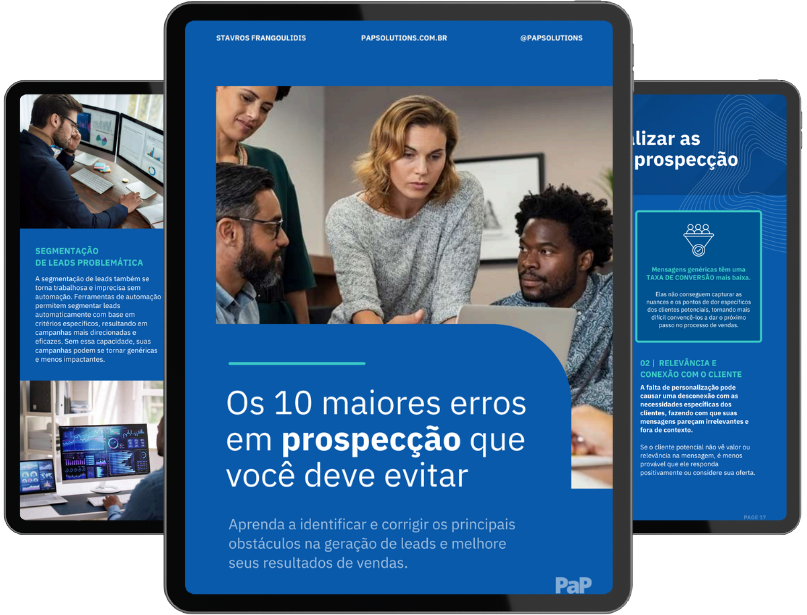Público frio é aquele que nunca ouviu falar de você.
Esse é o público que você deve se acostumar a lidar. É aí que o jogo do crescimento acontece.
Primeiro.
Você encontrará desconfiança. Muita.
A pessoa não te conhece e provavelmente não terá o mínimo interesse no que você tem a oferecer.
Mas mesmo que tenha, ela estará desconfiada.
Então você lidará com pessoas desconfiadas.
É assim no início.
Segundo.
Você encontrará desinteresse. Muito.
Diria que 90% das vezes que você falar com seu público frio, encontrará desinteresse em forma de silêncio ou em forma de “Ok, me envia um e-mail apresentando suas coisas que dou uma olhada e retorno.”
Mas a desconfiança inicial e o desinteresse são fichinha frente ao principal obstáculo nas vendas corporativas:
Chegar a ser ouvido e considerado.
É muito difícil penetrar nas empresas com seus públicos frios. Se você já prospectou sabe disso.
Se fosse fácil, todo mundo venderia para todo mundo. O mercado faz uma seleção natural de quem realmente transaciona e quem fica por fora tentando.
Diria a você que a grande maioria não tem tenacidade para fazer o jogo da penetração.
É um jogo de números e de crenças.
Números: Se você tentar falar com 100 empresas, estatisticamente, umas 15 vão te ouvir (para valer) e umas 2 a 4 vão comprar ao fim do seu ciclo de vendas.
Crenças:
Primeira: Empresas TEM que te ouvir. Empresas TEM que atender ao telefone. Funcionários estão ali e não tem o luxo de fazer como nós pessoas físicas fazemos de olhar para um número no visor e não atender.
Segunda: Você tem um real valor para passar para frente. Sua crença deve ser: Quem comprar de mim, se beneficiará tremendamente (e essa deve ser uma verdade). Então sua missão é ajudar quem precisa.
Então temos diversos componentes na prospecção corporativa: A desconfiança dos públicos, o desinteresse, os números e as suas crenças.
Esses componentes estão presentes no lidar com públicos frios.
- Espere por desconfiança. Tenha paciência e antecipe as respostas às principais objeções.
- Lide com desinteresse. Somente gaste sua energia para quem realmente pode e quer se beneficiar com o que você tem a oferecer.
- Aposte alto nos números: 40 a 80 abordagem diárias.
- Acredite no valor que você provê.
Em tudo isso tem um pacote “mimimi”. Posso recitar todas as objeções que rolam na sua mente, principalmente com relação aos números.
Vamos economizar nosso tempo.
Uma boa ligação de prospecção pode durar 10 minutos. Com algumas paradinhas, você pode fazer 5 dessas em uma hora. Em três horas, dá para ter 15 conversas boas.
Acontece que para ter uma conversa boa (que dura 10 minutos) você vai ter 10 conversas inócuas que duram de 2 minutos.
Portanto você tem aí 10 x 2 minutos = 20 minutos falando com gente desinteressada ou mesmo tentando falar com alguém.
Em uma hora você tem 30 conversas inócuas. Em 3 horas você tem 90 conversas inócuas.
Somando com as boas conversas, você tem em 6 horas de prospecção 105 conversas no telefone.
Divida por dois. Vamos planejar 3 horas de prospecção por dia. Isso resulta em 50 conversas.
Suponhamos que estou errado em 50%. Em 3 horas/dia podemos ter 25 conversas. Em 20 dias, serão 500.
500 conversas/mês com seu mercado alvo. Esse é o jogo dos números com públicos frios.
Claro que neste número tem as religações. Em média considere 5 ligações por empresa. Temos aí 100 empresas contatadas recebendo sua proposição de valor.
Quantas vão comprar? Pode ser que duas, quatro ou cinco.
Não sei precisar. Depende de fatores mercadológicos que nem eu nem você controlamos, mas estaremos no jogo estatístico e nas probabilidades do mercado de públicos frios.
Não estar nesse jogo, é depender de indicações.

